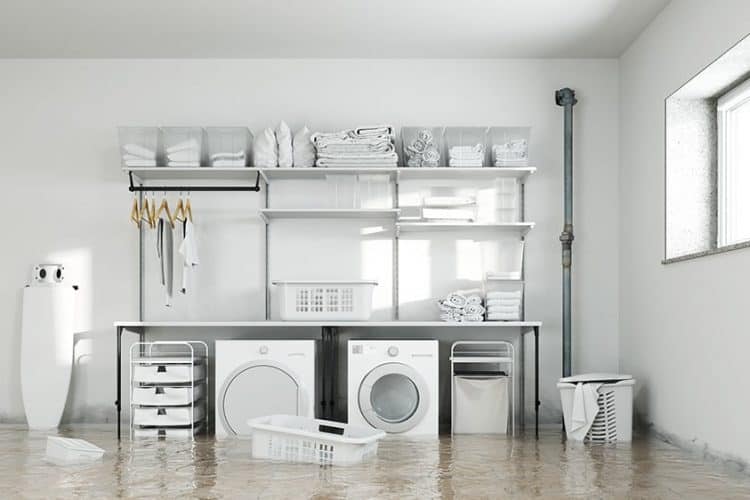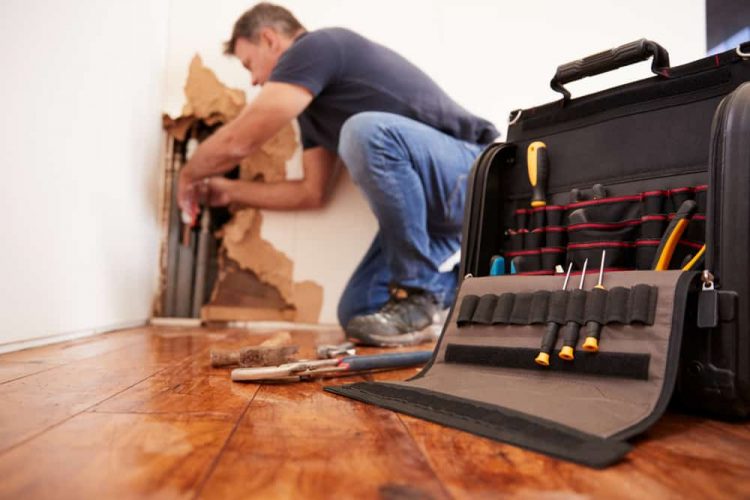Your Mold Questions Answered
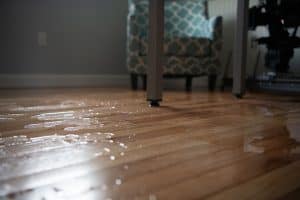 Water. It’s perhaps the most important substance on the planet. Everything needs water to survive, and indoor plumbing is one of the greatest advantages of modern living. Unfortunately, once water gets out of control, it can cause significant problems for your property. Leaky roofs, burst pipes, flooding, and more can create an excess of water where it’s not supposed to be. The result? Water damage. And that can lead to anything from bad smells to significant structural and electrical problems.
Water. It’s perhaps the most important substance on the planet. Everything needs water to survive, and indoor plumbing is one of the greatest advantages of modern living. Unfortunately, once water gets out of control, it can cause significant problems for your property. Leaky roofs, burst pipes, flooding, and more can create an excess of water where it’s not supposed to be. The result? Water damage. And that can lead to anything from bad smells to significant structural and electrical problems.
When the water starts to flow out of control, your primary concern is to get it cleaned up and limit the damage. But once you’ve dealt with the water, there’s another issue to take into consideration: Mold.
What is mold? How fast does mold grow? How is mold different from mildew? Here we answer your top questions about mold, and share the steps you can take to help prevent mold from taking over your home.
What Is Mold?
Mold is a category of fungi that reproduces through microscopic spores, which help it spread through the air. These spores exist indoors and outdoors, and can begin growing on nearly any surface or material where moisture is present, such as on plants, in the soil, on food, or—as dreaded by property owners—even in building materials like wood, drywall, carpet, ceilings, grout, and tile. Mold comes in a variety of types, species, and colors. Mold may be green, black, purple, pink, blue, brown, orange, red, or even white.
Why Does Mold Grow?
Mold is a living thing; it grows and reproduces. To do that, it needs the right kind of environment. To become active and begin to colonize, a mold spore requires oxygen, a food source, moisture, and heat. Most molds will remain dormant in dry locations or when the temperature is below 40° F. On the other hand, mold thrives in temperatures between 77° F and 86° F, and humid environments are most at risk due to the excess of moisture, particularly those where mold can break down and metabolize organic materials, such as paper, wood, and drywall. Mold can also grow in areas where discarded soap scum and skin cells are plentiful, such as in the bathroom.
What’s the Difference between Mold and Mildew?
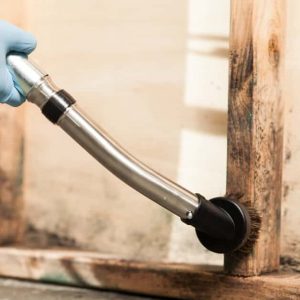 People often use the word ‘mildew’ as a generic term to describe any sort of home fungal growth. But mildew and mold are not the same thing. Mildew and mold may look similar, and mildew also produces a musky, mold-like smell. However, unlike mold, mildew tends to remain only on the surface without penetrating any deeper. This makes it easier to remove than mold. Mildew is also less dangerous than many kinds of molds, and is less likely to cause damage to home or health. However, prolonged mildew infestations can still cause cosmetic property damage or even lead to coughing and other respiratory issues, and should never be ignored.
People often use the word ‘mildew’ as a generic term to describe any sort of home fungal growth. But mildew and mold are not the same thing. Mildew and mold may look similar, and mildew also produces a musky, mold-like smell. However, unlike mold, mildew tends to remain only on the surface without penetrating any deeper. This makes it easier to remove than mold. Mildew is also less dangerous than many kinds of molds, and is less likely to cause damage to home or health. However, prolonged mildew infestations can still cause cosmetic property damage or even lead to coughing and other respiratory issues, and should never be ignored.
Is Mold Dangerous?
Aside from the property damage mold can cause, people often worry about the health-related impacts of mold. Mold reproduces by releasing spores into the air, and the more mold there is in a property, the more spores there are, which is a major contributing factor to poor indoor air quality (IAQ). Extensive mold contamination or prolonged exposure to mold can cause respiratory problems, with some people being more sensitive to mold spores than others. Those with existing conditions — such as allergies, emphysema, or asthma — may be most at risk. Mold exposure symptoms can include congestion, eye irritation, coughing, wheezing, and difficulty breathing.
What Is the Most Dangerous Type of Mold?
It’s important to note that not all types of mold are “bad;” some species are necessary for things like natural decomposition and even making certain medicines. That being said, people often hear about “black mold” being the most dangerous when it comes to property damage. This typically refers to the Stachybotrys chartarum species, which grows on building materials such as drywall after water damage incidents and is a greenish-black color. This and other species of mold can produce toxic byproducts (“mycotoxins”) when they begin to break down materials they’re growing on.
However, just because you find a dark-colored mold in your property does not mean it is always S. chartarum or “black mold.” It can be difficult to effectively identify mold or assess risk based on its color alone; certain kinds of mold may change in appearance as they grow and spread, and what looks like one type of mold in certain lighting or to the naked eye might actually be a different type when tested or viewed in controlled conditions. Still, mold of any kind should be eliminated as quickly as possible, as any mold infestation in the home can lead to property damage and possible health complications.
How Long Does It Take for Mold to Grow?
Mold grows extremely fast in the right conditions. Within 24 to 48 hours, mold can take root and begin to colonize. When faced with sudden water damage, homeowners can often work with professionals to address the problem quickly, potentially resolving any mold issues before they start. However, when minor leaks occur behind walls, under floorboards, in ventilation ducts, or in the ceiling, the mold may have more than enough time to spread before anyone discovers it.
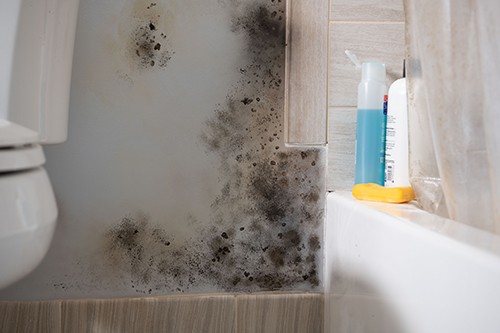 How Long Does It Take for Mold to Grow on Wet Drywall?
How Long Does It Take for Mold to Grow on Wet Drywall?
Mold growing on wet drywall follows a similar growth pattern as on other surfaces; within two days (or about 24 to 48 hours) of water intrusion, mold will begin to colonize damp drywall and release new spores. One thing to keep in mind, however, is that drywall is extremely porous, so it has a high absorption rate. This makes it more susceptible to water damage, and more likely to experience accelerated mold growth.
How Long Does It Take for Mold to Grow on Wet Carpet?
Mold can begin to grow on wet carpet in 24 to 48 hours. And much like drywall, carpet can absorb a lot of water, with even more nooks and crannies for mold spores to settle into. As an added problem, many carpets are filled with tiny particles of dirt, skin cells, insect husks, food refuse, and other organic material for the mold to thrive on.
How Long Does It Take for Mold to Become Visible?
Although mold begins to grow within a day or two of taking root after a water or excessive moisture issue, it takes a bit longer for the mold colony to become big enough to be seen with the naked eye. If left unchecked, mold will become clearly visible within about two to four weeks. Other factors–such as high humidity, warm temperatures, lack of airflow, or contaminated water–can also speed up this process, making it easier to identify sooner.
How Fast Does Mold Spread in a House?
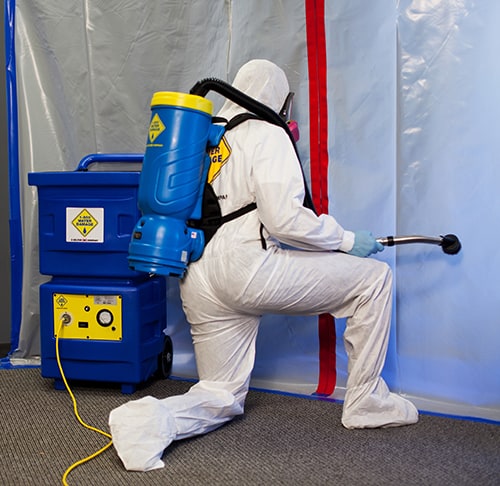 As soon as the mold begins to grow, it releases more spores. Any nearby areas that meet the right conditions can then become new mold colonies, which in turn grow and send out more spores. Most molds grow at a rate of about one square inch per day, but as more and more new areas are colonized, that growth may see an exponential boost. Again, humidity, temperature, airflow, and contaminant level can also help mold spread much faster throughout a property.
As soon as the mold begins to grow, it releases more spores. Any nearby areas that meet the right conditions can then become new mold colonies, which in turn grow and send out more spores. Most molds grow at a rate of about one square inch per day, but as more and more new areas are colonized, that growth may see an exponential boost. Again, humidity, temperature, airflow, and contaminant level can also help mold spread much faster throughout a property.
How Can You Spot Mold in Your Home?
Sight and smell are usually the first two ways you’ll catch mold in your home. As mentioned above, mold comes in many colors. If you notice any discolorations (particularly black, green, or pink) in areas with water damage, then you likely have a mold problem. A ‘musty’ scent is another common sign of mold growth, and you may even notice this before mold growth becomes visible. This wet or stale odor is helpful indicator of a mold issue in areas that are not as easy to inspect visually, You may also notice. Other signs of mold include soft spots in home surfaces, respiratory symptoms in home occupants, unexplained wall damage, or ants (which love to live in decomposing materials).
Does Mold Always Grow after a Leak?
No mold doesn’t always grow after a leak. If the temperature isn’t right or if the leak is properly dealt with quickly, there’s a chance that mold spores won’t be able to take root or grow. But this is the exception rather than the rule; unexpected leaks, flooding, or even trapped humidity (such as from improperly ventilated shower rooms) will generally lead to mold.
Can Mold Dry Out and Die on Its Own?
As a living thing, mold remains active only as long as the conditions are suitable. With no moisture and no organic material to feed on, the mold will dry out and die. But even if the colony dies, its spores remain, and may easily grow into new colonies when the environmental conditions are right again. It’s also worth noting that mold can become dormant for extended periods of time–like over a cold winter–without actually dying, only to continue growing once the weather warms up again.
What Should You Do if You Have Mold?
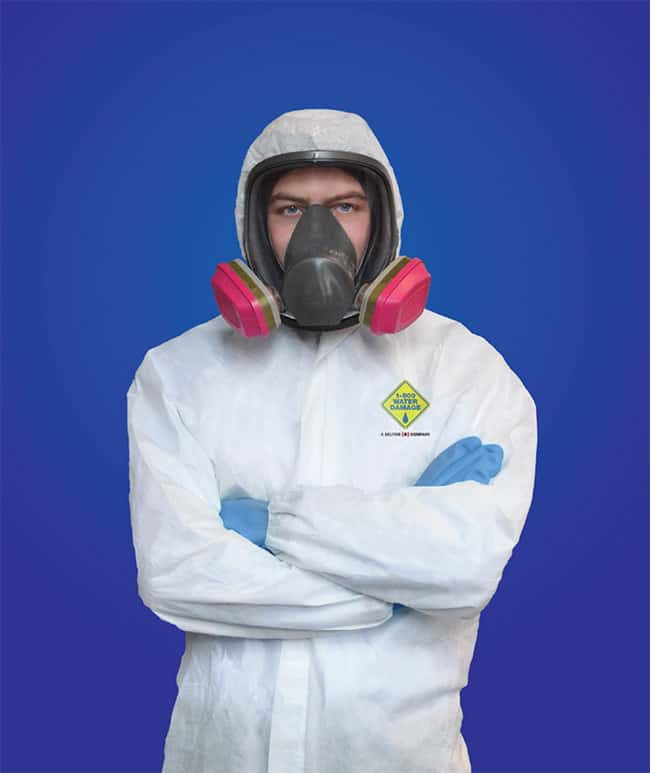 If you find mold in your home, the best thing you can do is call a mold remediation expert. There are a few DIY steps you can take to begin getting the mold infestation under control, though. The very first thing you’ll need to do is identify the source of the moisture issue that led to the mold growth. If the problem hasn’t been corrected yet, you’ll then need to find and address any leaks or flooding, get rid of standing water, and completely dry out the affected area (you may also need a professional for this part, too).
If you find mold in your home, the best thing you can do is call a mold remediation expert. There are a few DIY steps you can take to begin getting the mold infestation under control, though. The very first thing you’ll need to do is identify the source of the moisture issue that led to the mold growth. If the problem hasn’t been corrected yet, you’ll then need to find and address any leaks or flooding, get rid of standing water, and completely dry out the affected area (you may also need a professional for this part, too).
Once the moisture problem is taken care of, then you can address the mold. If the mold-impacted area is less than 10 square feet, and it’s only on a hard surface (i.e. not carpet or drywall, for example), you may be able to remove the mold growth using a DIY approach. However, it is worth noting any DIY mold removal still poses a considerable risk. Intense scrubbing of certain surfaces or disturbing mold-infested materials releases more spores into the air, providing more opportunities for the mold to spread to a larger area, which can lead to more damage down the road. Plus, wherever there is visible mold, there’s a good chance that there’s more mold hiding in the areas you can’t see.
1-800 WATER DAMAGE offers professional mold removal and remediation services for residential and commercial properties. With extensive experience, and backed by the right tools and processes, these mold-removal specialists will perform a thorough assessment of your property to understand the extent of the mold infestation. Then, they’ll create a customized plan to address the problem at the source, prevent contaminated areas from spreading, eliminate any current mold growth, and work with you to develop preventive measures to help ensure that the mold doesn’t come back.
If you have mold in your home or property, don’t wait until it becomes a hazard. Contact 1-800 WATER DAMAGE today, and stop mold once and for all.

